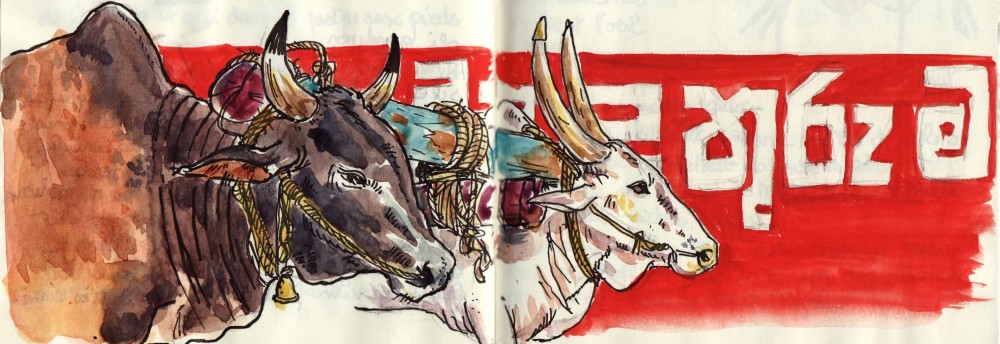At the heart of Parque das Nações, the new Lisbonne neighborhood built to host the World Expo of1998, stands the Océanorio, the largest aquarium in Europe. Landed on the water this amazing futuristic building is covered with a corrugated glass roof suggesting sea waves.
The giant aquarium surrounded by four swimming pools has an incredible wildlife. For once relegating the architecture to the second rank in the drawing, I wanted to try what could be a naturalistic drawing in two colors. I could not draw on the spot because of the crowd. So I picked up a simple flyer advertising the aquarium and flashed on a very inspiring little picture of a wonderful octopus. In the end, the result is rather encouraging. I should try more naturalist drawings in the future…
De toute évidence, le poulpe de l’aquarium de Lisbonne m’a impressionné
Au cœur du Parc des Nations, nouveau quartier de Lisbonne édifié pour accueillir l’Exposition Universelle de 1998, se dresse l’Océanorio, le plus grand aquarium d’Europe. Posé sur l’eau cet étonnant bâtiment futuriste est recouvert d’un toit de verre ondulé pour suggérer des vagues.
Un aquarium géant entouré de 4 piscines abrite une faune incroyable. Reléguant pour une fois l’architecture au second rang, j’ai voulu changer et voir ce que pouvait donner un dessin naturaliste en deux couleurs. Ne pouvant dessiner sur place en raison de la foule, j’ai ramassé un simple prospectus publicitaire de l’aquarium et flashé sur la petite photo d’un superbe poulpe. Au final, le résultat est plutôt encourageant…et donne envie de poursuivre dans la veine du dessin naturaliste !










